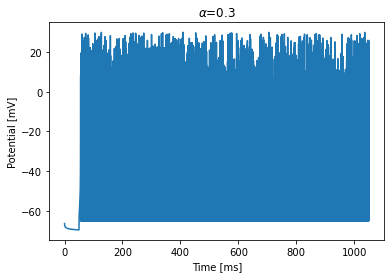(Teka, et. al, 2018): Fractional-order Izhikevich neuron model
Implementation of the model:
Teka, Wondimu W., Ranjit Kumar Upadhyay, and Argha Mondal. “Spiking and bursting patterns of fractional-order Izhikevich model.” Communications in Nonlinear Science and Numerical Simulation 56 (2018): 161-176.
[1]:
import brainpy as bp
import matplotlib.pyplot as plt
[2]:
def run_model(dt=0.1, duration=500, alpha=1.0):
inputs, length = bp.inputs.section_input([0, 10], [50, duration],
dt=dt, return_length=True)
neuron = bp.neurons.FractionalIzhikevich(1, num_memory=int(length / dt), alpha=alpha)
runner = bp.DSRunner(neuron,
monitors=['V'],
inputs=['input', inputs, 'iter'],
dt=dt)
runner.run(length)
plt.plot(runner.mon.ts, runner.mon.V.flatten())
plt.xlabel('Time [ms]')
plt.ylabel('Potential [mV]')
plt.title(r'$\alpha$=' + str(alpha))
plt.show()
Regular spiking
[3]:
run_model(dt=0.1, duration=500, alpha=1.0)
WARNING:jax._src.lib.xla_bridge:No GPU/TPU found, falling back to CPU. (Set TF_CPP_MIN_LOG_LEVEL=0 and rerun for more info.)
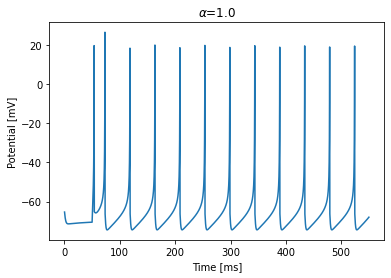
Intrinsically bursting
[4]:
run_model(dt=0.1, duration=500, alpha=0.87)
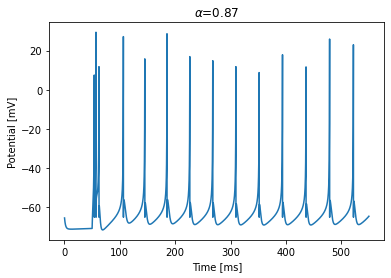
Mixed Mode (Irregular)
[5]:
run_model(dt=0.1, duration=500, alpha=0.86)
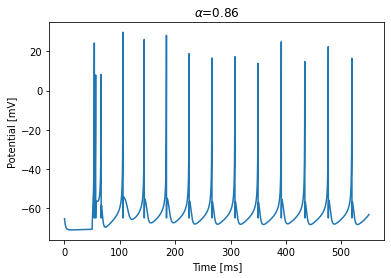
Chattering
[6]:
run_model(dt=0.1, duration=500, alpha=0.8)
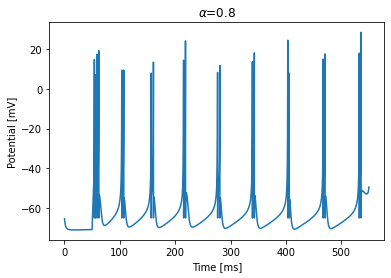
Bursting
[7]:
run_model(dt=0.1, duration=1000, alpha=0.7)
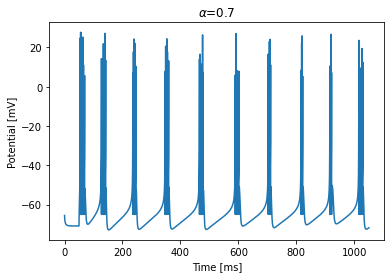
Bursting with longer bursts
[8]:
run_model(dt=0.1, duration=1000, alpha=0.5)
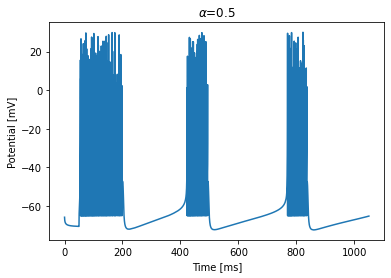
Fast spiking
[9]:
run_model(dt=0.1, duration=1000, alpha=0.3)
